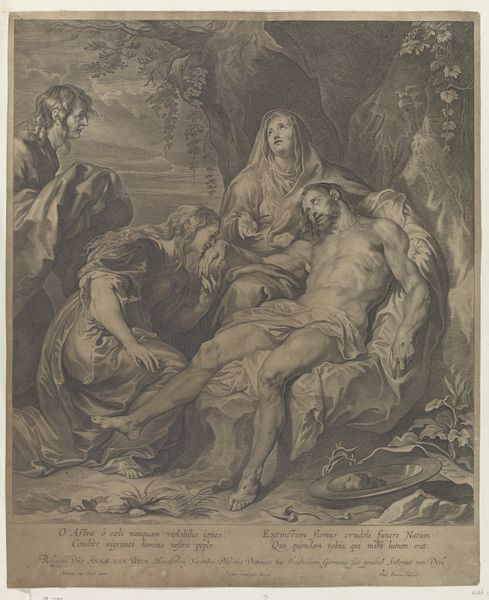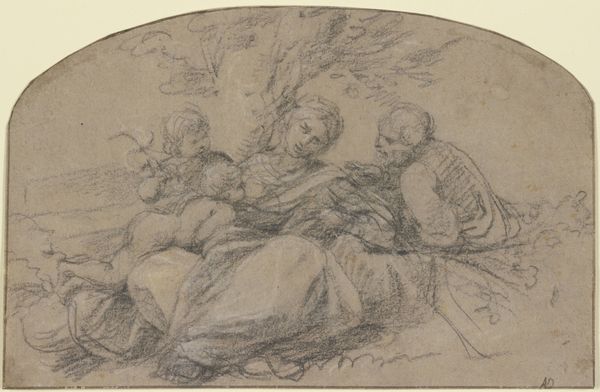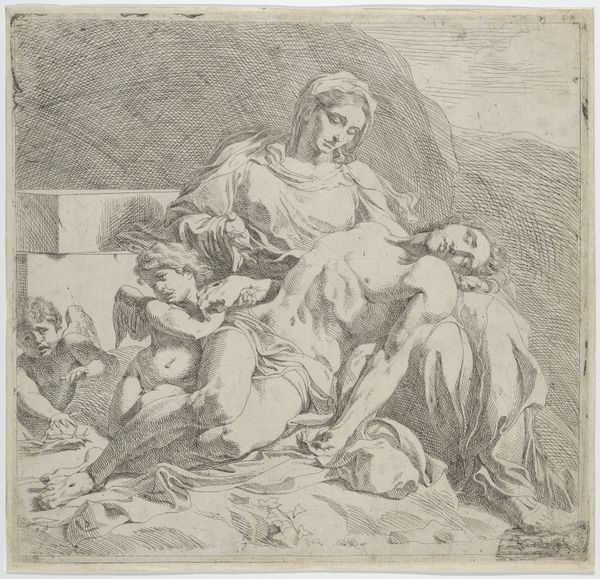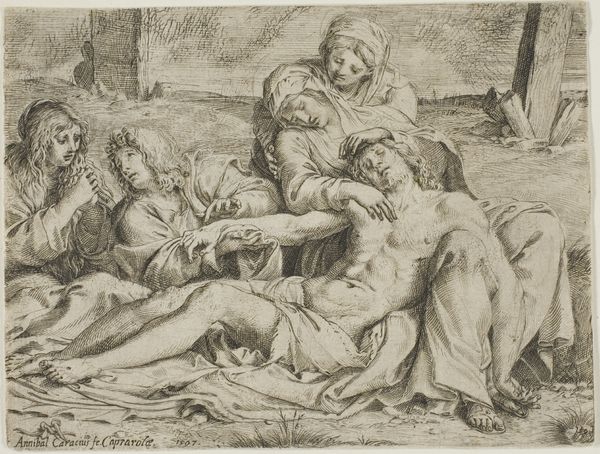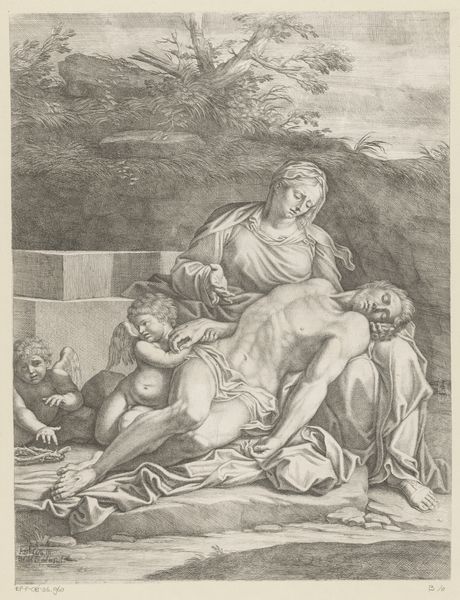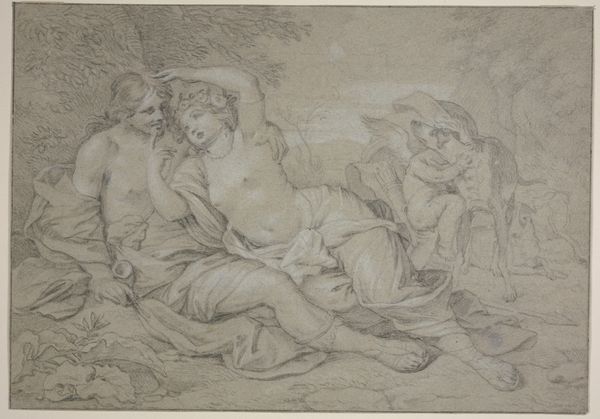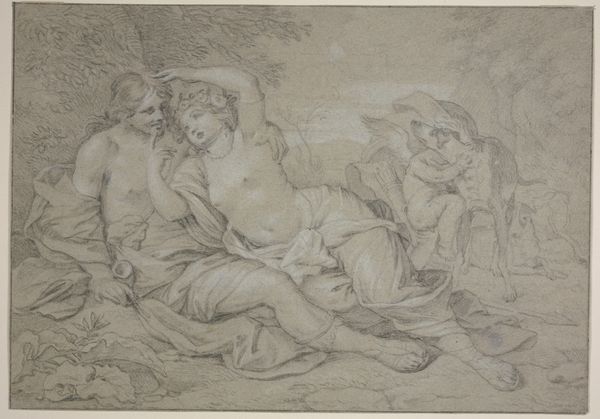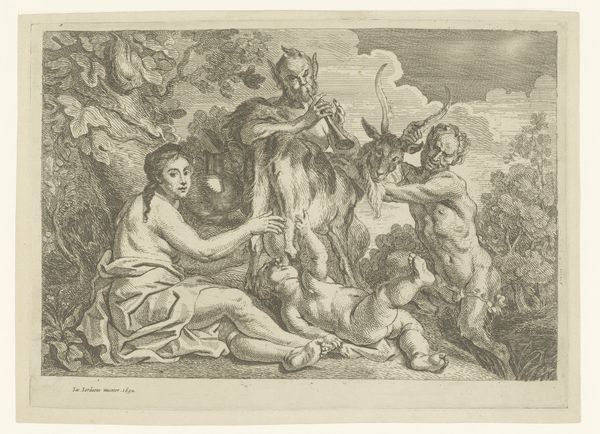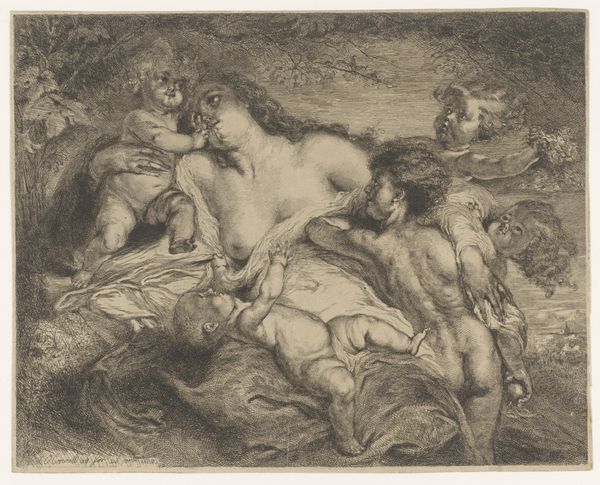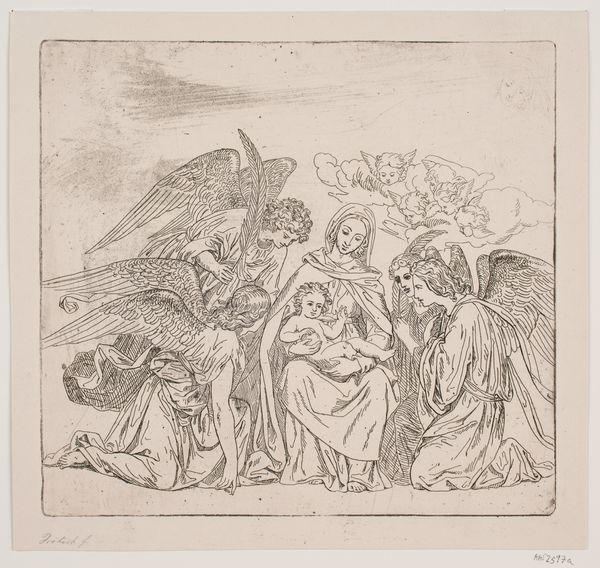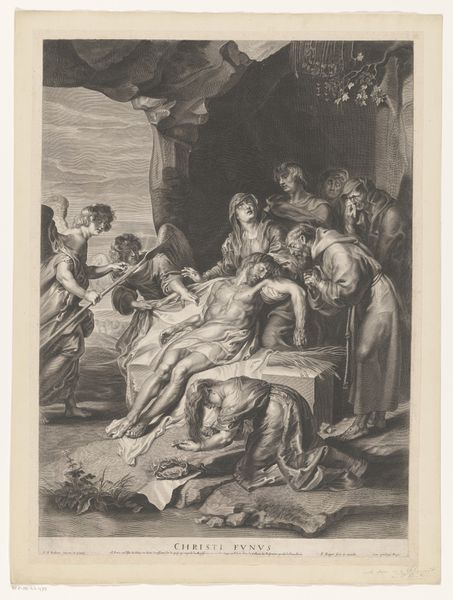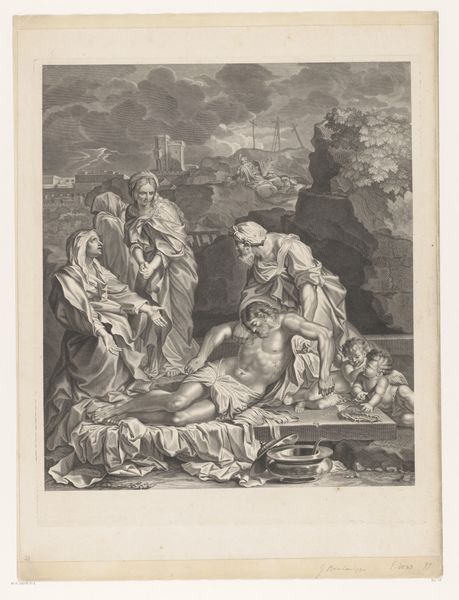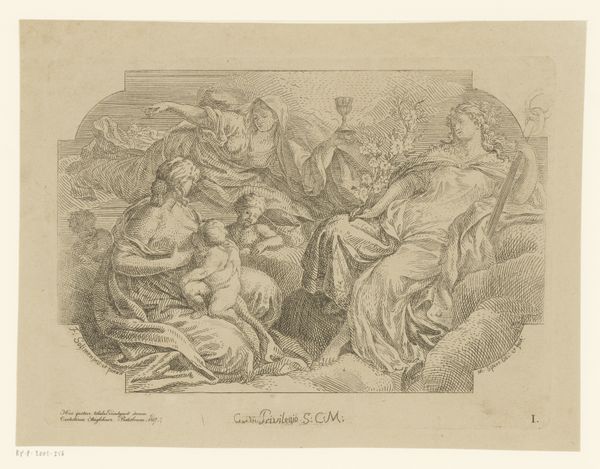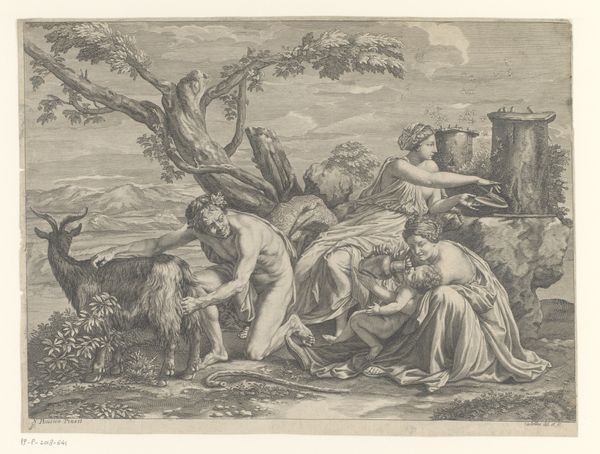
drawing, print
#
portrait
#
drawing
#
narrative-art
# print
#
figuration
#
romanticism
#
history-painting
Dimensions: Sheet: 11 7/8 × 15 1/2 in. (30.2 × 39.4 cm)
Copyright: Public Domain
Curator: Let's turn our attention to "Anche a me, Madre mia!", or "Me too, mother!", a print made by William Young Ottley in 1828, currently residing here at The Met. Editor: Immediately, I'm struck by the density of emotion communicated through a relatively simple black-and-white print. The intertwined figures, their faces heavy with either exhaustion or sorrow—it's intensely intimate and sorrowful. Curator: It's a striking piece for sure. Ottley, while working with a medium of reproducible prints, draws upon the aesthetic ideals of Romanticism, as well as engaging with conventions of history painting through figuration and narrative. In the 19th century, these works were increasingly circulated as illustrations, displayed in salons and galleries, influencing tastes and artistic ideas. Editor: What I find compelling is how this piece, ostensibly depicting a personal or domestic scene, could be so easily imbricated into the grand narratives of history painting. Whose history, whose narrative gets monumentalized? There's such vulnerability within this image— a woman’s hand outstretched, perhaps pleading, with a clear need to care for those behind her. And here she is at the heart of this… something that looks quite deliberately composed for display. What is the meaning that we're ascribing through display and viewership? Curator: Exactly. The print functions on multiple levels, both mirroring and participating in cultural constructions of domestic life and heroic subject matter, like those seen throughout Western art. It gives an opportunity to explore how Romanticism as a movement, despite the claims toward universality, became shaped by bourgeois values of the domestic. Editor: Thinking of Ottley's other work, this piece takes on new layers, because much of his other work served the project of collection. As an investment, this also makes sense, considering this tension and overlap with so-called "high" and "low" art. Ottley straddled that boundary by not committing to being an artist himself, but taking an interest as someone with access. The questions about accessibility also become relevant when looking at Ottley, and this reproduction is yet another intervention by which to participate in the visual narrative-making. Curator: In viewing this print, we are left not only to reflect on its immediate subject matter, but to consider the world that it existed within. Editor: Right, it demands we contemplate the layers of mediation inherent in visual representation, both then and now. It is quite evocative to reconsider today the historical and socioeconomic processes embedded within these kinds of representations, particularly as the images get repeated and remixed throughout art history.
Comments
No comments
Be the first to comment and join the conversation on the ultimate creative platform.
